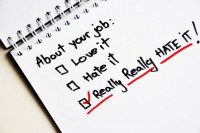
For the past 10 years Milestone Information Technology has been using the Myers-Briggs Type Indicator (MBTI) as part of our recruiting process. In the creation of our candidate’s digital profile, we ask them to compete the test. By doing so we have found numerous benefits in helping our clients identify personalities that will fit in to certain workplace culture. If you are unsure as to what the MBTI is here is some background.
The Myers-Briggs Type Indicator (MBTI) is a globally utilised test that is completed by 2.5 million people each year and 89 of the Fortune 100 companies utilise this as part of their hiring process. According to Business Insider Australia the cost per year of profit that CPP earn from holding the rights to the MBTI is closet to 20 million dollars.
The test is based on the works of Swiss Psychiatrist Carl Jung who had a huge interest in humans and their personalities. This lead to his book “Psychologische Typen” being published in 1921. Though it was a huge success within academic circle, he failed to have the same success with the mass population, mainly due to the academic language used in his work.
During the 1940’s while WWII was taking place two women, Isabel Briggs Myers and Katharine Cook Briggs took Jung’s research and created the Myers-Briggs Type Indicator. The Typology test involved answering 93 questions that were used to produce results which in turn were able to pin point the personality traits of a person. Initially this test was used for women entering the workforce during WWII, due to the fact many men were fighting in the war at the time.
The MBTI helped indicate into what areas of work the women would excel in, this was stream lining the whole hiring process for companies that needed roles filled ASAP. After WWII finished American corporations saw the success of the MBTI and began implementing this into their hiring process.
Recently there has been a great deal of criticism from psychologist that the test does not give accurate results. The argument is that the questions asked are binary questions, which do not capture the reality of our present lives and are not at all tailored to help define workers skills. Another argument is that the quiz is no longer credible, mainly due Buzz Feed’s fondness in creating pop culture quizzes based on the MBTI system. In some way these hold some validity, but the main fact is the MBTI has stood the test of time. The overall benefits for businesses far out weighs any negativity given by the psychology community.
It’s unquestionable that using the MBTI benefits the hiring process, by saving both time and money, while making sure the right staff is hired. The proof is in the figures more than 10,000 companies, 2,500 colleges and universities and 200 government agencies in the United States use the test. At the present the U.S government and U.S Army still use this as part of their recruitment process.
The MBTI has now been around for over 80 years; it’s been adapted to fit our current day culture but has always kept the main source at heart. This is why it is still highly respected in the recruitment industry and will be respected for many more years to come.
Back





